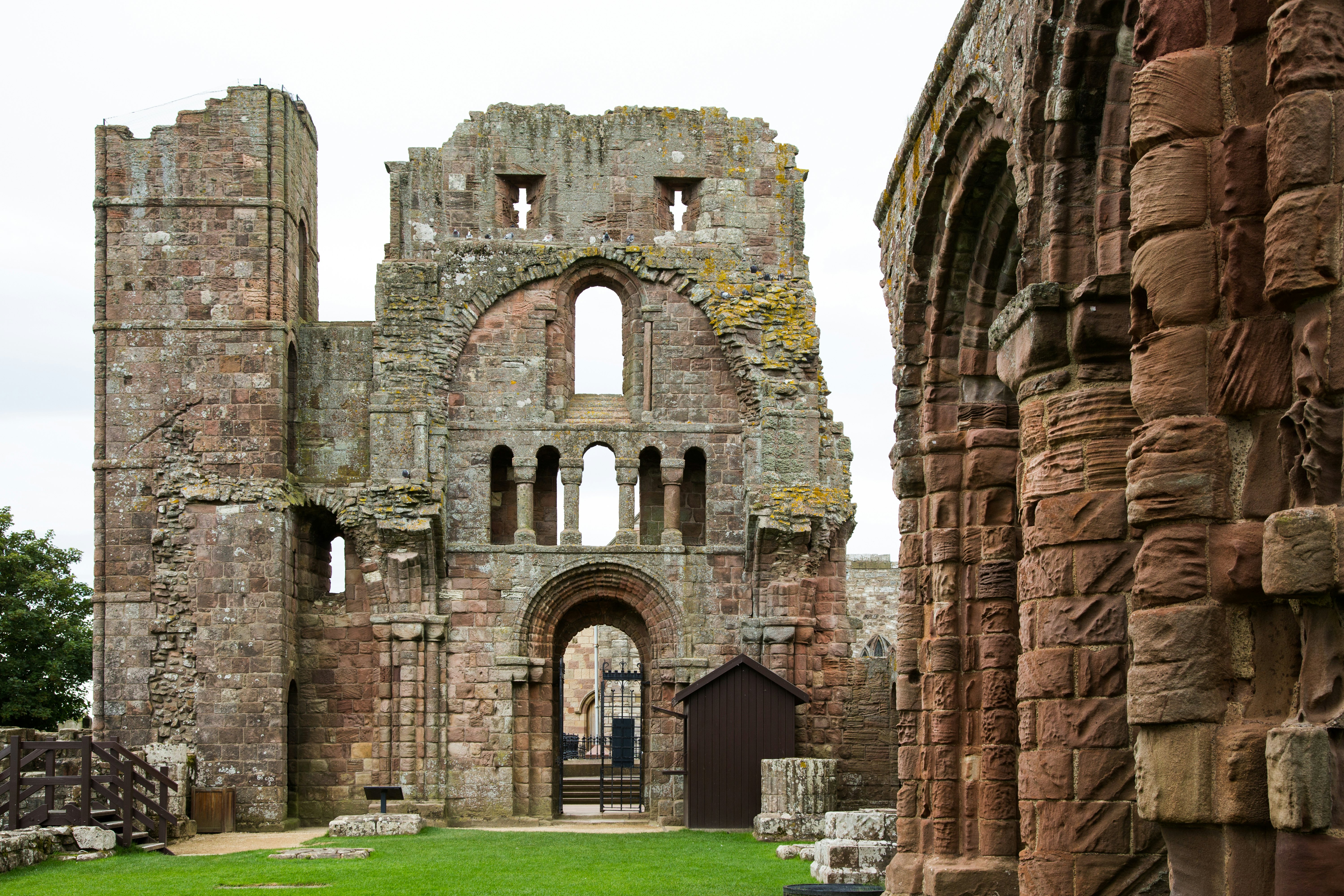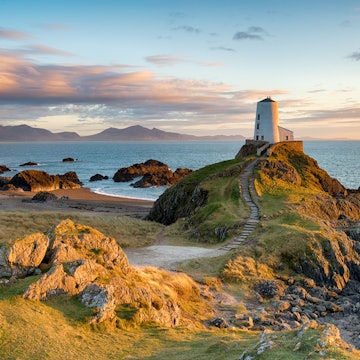
14 of the best things to do in Northumberland, England's northernmost county

Jul 17, 2025 • 10 min read

Coquet Island near Amble, off the coast of Northumberland. Dave Head/Shutterstock
The northernmost county in England has an off-the-radar feel that’s rare on this otherwise bustling island. Much of the pristine coastline of Northumberland is an Area of Outstanding Natural Beauty, and its edge-of-the-world light has drawn in travelers for centuries, from early Christian saints to great Romantic painters.
The county’s interior is a place of vast, untouched landscapes, remote walking paths, and gloriously dark skies. But it's not always been tranquil – Northumberland played a pivotal role in English history, and you can learn about its battle-filled past at its catalog of ancient ruins and crumbling castles.
When planning your trip, be aware that many attractions go into hibernation during the chilly winter months. The arrival of spring is the ideal time to pull on your sturdy walking shoes and get stuck into the best things to do in Northumberland.

1. Behold Bamburgh Castle
Bamburgh Castle’s ramparts, watchtowers and storybook keep sprawl over a dolerite bluff overlooking a beautiful sweep of beach. This Norman fortress could have gone the way of the region’s other time-toppled strongholds, but 19th-century industrialist Lord Armstrong snapped it up for a bargain price, then spent a fortune on its restoration. His descendants still live within its hefty stone walls.
Visitors can enjoy a fascinating glimpse into Northumberland’s battle-sieged past by touring the staterooms, armory and grounds. Be sure to clamber over the grassy dunes below the bluff – the view of the castle from the powder-soft sands is one of England’s loveliest vistas.
Planning tip: There are two self-catering accommodations within the castle grounds. Book the elegant Clock Tower, that once hosted medieval kings and queens, or the Neville Tower, with dramatic coastal views.
2. Seek seals and puffins on the Farne Islands
Piercing the North Sea a couple of miles off the Northumberland coast, the Farne Islands have provided sanctuary to shipwreck survivors and saints over the centuries. Today, these isolated isles are an important haven for wildlife – inquisitive seals, clown-billed puffins, and some 100,000 other seabirds come to these soot-colored outcrops to breed.
To get close to this photogenic crowd, board a boat in the village of Seahouses. Trips run all year, weather permitting; tours with Billy Sheil and Serenity are popular choices. Although the waters are invariably choppy, and a windproof coat is nearly always needed, you can enjoy a gentler ride from May to August, with almost guaranteed puffin and seal sightings.
Planning tip: From April to September, it’s possible to spend an hour exploring the National Trust-managed island of Inner Farne on foot – just bring a hat as protection from swooping Arctic terns.

3. Take a pilgrimage along the causeway to Lindisfarne (the Holy Island)
The tiny tidal island of Lindisfarne, cut off from the mainland twice a day by the rhythms of the sea, became the unlikely center of English Christianity during the Early Middle Ages. Still known as the Holy Island, the isle is dominated by the mottled medieval ruins of Lindisfarne Priory marking the spot where St Aidan founded the island’s original monastery in 635 CE. Reaching Lindisfarne today involves walking or driving along a narrow causeway that is submerged at high tide; check crossing times before traveling.
On the other side of the harbor, a steady trickle of waterproof-clad daytrippers flows uphill to lovely Lindisfarne Castle. Sure-footed walkers can continue to the secluded northern beaches, but it's just as rewarding to take a gentle stroll around the Gertrude Jekyll Garden, past the sheds fashioned from upturned herring boats near the harbor, and on through the island's single picture-postcard village. Pause for a warming flat white at Pilgrims Coffee and stock up on Lindisfarne Mead at St Aidan’s Winery before the sea sweeps back across the causeway.
4. Feast on some of England's freshest seafood
The North Sea’s cold, mineral-rich waters produce some of England’s finest seafood. Keep your eyes peeled for menu entries involving Craster crabs and Lindisfarne oysters. A good place to slurp them down is the Potted Lobster in Bamburgh.
Over in Craster, you’ll find another regional delicacy: Craster kippers. For over a century, L Robson & Sons has produced these cured fish in traditional smokehouses. Pipers Pitch, the little food van by the village car park, serves them glistening with butter in a soft bread bun.
For fresh-off-the-boat seafood, make a beeline for Amble, where the Old Boathouse and its sister restaurant, the Fish Shack, plate up elegant fish and chips and piled-high sharing platters.

5. Experience the magic of Alnwick
The handsome cobbled center of Alnwick is an excellent place to make your Northumberland base. Dating back to 1096, Alnwick Castle (pronounced AN-ik) boasts parklands landscaped by Lancelot "Capability" Brown and paintings by several Italian Old Masters. But it’s arguably more famous for its role as Hogwarts in the first two Harry Potter films. The imposing fortress has proudly embraced its celebrity status, with castle tours highlighting filming locations; budding wizards can even undergo broomstick training in the same spot where Harry learned to fly.
Developing the 4.8-hectare plot next to Alnwick Castle was a labor of love for the current Duchess of Northumberland. Alnwick Garden is an enchanting web of contemporary, bloom-filled enclosures. At its heart is a spectacular 21-tiered water feature, which occasionally drenches admirers with its dancing jets. The garden’s other showstoppers include a sinister poison garden, the water-filled Serpent Garden, a labyrinth of bamboo, and the inviting Treehouse Restaurant. Entry to the Poison Garden, with around 100 toxic plants, is included in your ticket but it can only be visited as part of a guided tour.
Friendly volunteers welcome families to the Bailiffgate Museum and Gallery with kid-friendly trails and hands-on activities. Housed in the old rail station, Barter Books also offers snug shelter from the rain; buy a second-hand novel to read by the store’s open fire as miniature trains rattle over the shelves.
6. Stroll the coastal path to Dunstanburgh Castle
The crumbling twin towers of 14th-century Dunstanburgh Castle can only be reached on foot, but it's a lovely walk. Start at the fishing village of Craster, and follow the Northumberland Coast Path north through flat, grassy farmland dotted with cows and sheep. As you spy the romantic ruins brooding in the background, you’ll understand why JMW Turner kept returning to this strip of coast in his atmospheric watercolors. Keep binoculars handy in case seals or dolphins are bobbing about in the sea.
Planning tip: The 2-mile walk is the main draw, but you can also buy tickets to enter the English Heritage-managed castle. Carry on across the splendid horseshoe beach of Embleton Bay for a fresh crab sandwich at the Ship Inn, or turn back towards the Jolly Fisherman at Craster.

7. Have a family-friendly day out in Amble
Come to Amble for the delicious seafood, but stay to enjoy the family-friendly sights around the River Coquet estuary. By booking ahead, you can join a puffin cruise around lighthouse-topped Coquet Island. Afterward, take a stroll around the harbor, admiring its pastel-colored beach huts, and browse the wooden retail pods, which sell everything from local crafts to cheese.
Detour: A playground hides to the south of the harbor, and kids will also be delighted by the award-winning ice cream at Spurreli. Grown-ups may be equally pleased by the fresh craft ales at Brewis Beer Co.
8. Enjoy the scenery along the North East's epic beaches
Coming to Northumberland without visiting a beach would be like going to Paris and not setting foot on a cafe terrace. Bamburgh and Embleton Bay, with their romantic castle vistas, are two of the most popular choices for sand-seekers, yet you may find them occupied by only a handful of families and the odd dog walker. For variety, test out the soft sands of pretty Alnmouth, head south to pristine Cresswell Beach, or decamp to painter L S Lowry’s favored strands at Newbiggin-by-the-Sea.
Overlooking the golden swoop of Beadnell Bay Beach are three 18th-century lime kilns; once the haunt of smugglers, they’re now where fisherfolk stash their lobster pots. The bay’s sheltered waters are a good spot for sailing and watersports; KA Kitesurfing Adventure Sports offers kitesurfing, paddleboarding, snorkeling, and more, with plenty of activities aimed at kids.

9. Hike along Hadrian’s Wall
In 122 CE, the Roman Emperor Hadrian decided to make clear to the Picts in the north where his authority began. The result was a 73-mile-long stone frontier lunging from coast to coast across northern England (well south of the modern Scottish border). Northumberland is home to the longest surviving stretch, which tilts its way through captivating landscapes, with some fascinating fort and temple ruins en route.
It’s possible to ramble the entire Hadrian’s Wall Path. If that sounds a tad ambitious, start out with the dramatic section at Housesteads Roman Fort & Museum within Northumberland National Park.
Detour: Enthusiasts can continue the deep dive into history at the nearby live excavation site at Vindolanda Roman Fort & Museum.
10. Explore Roman ruins and drink craft beer in Corbridge
A couple of miles south of Hadrian’s Wall are the ruins of Roman Corbridge, once the most northerly town in the Roman Empire. It’s still possible to tramp down its timeworn high street, gaining a sense of how the local craftspeople, traders and soldiers lived side by side in this cosmopolitan hub two millennia ago. The excellent on-site museum is home to the Corbridge Hoard, a collection of arms and armor that represents one of the most significant Roman finds in England.
A short stroll along the banks of the River Tyne will bring you to the modern-day town. Snoop around its independent book, antique and craft stores, then duck into the Pele Tower for a pint of local ale. This three-storied micropub was once a fortified medieval vicarage and feels a bit like a set from the TV series Game of Thrones.

11. Marvel at the ingenuity of Cragside
Set atop a rugged hill and framed in June by a kaleidoscope of rhododendrons, Cragside House is impressive enough from the outside, with its magnificent Arts and Craft exterior. Yet, the inside is even more astounding. This was the first house in the world to be powered by electricity, and its pioneering owners stuffed it full of every possible Victorian invention, running off an innovative hydroelectricity system. Keep an eye out for an early dishwasher and a water-powered rotating spit in the kitchen.
Detour: It’s possible to spend an entire day touring the house and its 1000-acre grounds. All the same, try to stop by the nearby town of Rothbury with its lovely high street, crammed with independent stores. Bewicks Bistro and Cafe is a great place to recharge.
12. Dig down into mining history
A trip to the Woodhorn Museum is a great way to delve into the region’s industrial past. Located on the edge of Queen Elizabeth II Country Park, on the site of what was once the largest pit village in the world, the museum's interactive exhibits and immersive mock-ups give a powerful sense of what life would have been like for the 2000 coal miners who worked below ground here.
Be sure to look out for artworks by the "Pitmen Painters," an amateur art group who created a striking record of life in Northumberland’s mining communities in the mid-20th century. With its mix of indoor galleries and dog-friendly outdoor spaces, Woodhorn is a great choice for a day of changeable weather – something fairly common in this part of the country.

13. Stargaze at Northumberland International Dark Sky Park
The night skies above Northumberland National Park and most of Kielder Water and Forest Park have been awarded gold tier status by the International Dark-Sky Association, making this the largest International Dark-Sky Park in the UK. On clear nights in autumn and winter, you have only to gaze upwards after sunset to be wowed by the shimmering show.
Kielder Observatory runs expert-led events if you need some help navigating the galaxies (book well ahead). Alternatively, sign up for a stargazing night at Twice Brewed Inn – you can eat supper, marvel at twinkling constellations at the on-site observatory, then return for a pint in the cozy bar before heading upstairs for bed.
14. Cycle between large-scale artworks at Kielder Water and Forest Park
Kielder Water and Forest Park is home to the largest artificial lake in northern Europe and it's a scenic summer playground for watersports fans. But culture vultures flock here too, lured by the large-scale art installations that litter the 26-mile shoreline. Hire a bike if you want to see them all, although manageable walking trails take in some of the highlights. Perhaps the most memorable work is Silvas Capitalis by American art collective, SIMPARCH – this giant wooden head screams out from the forest and you can enter its mouth and peek from its haunted eyes.















